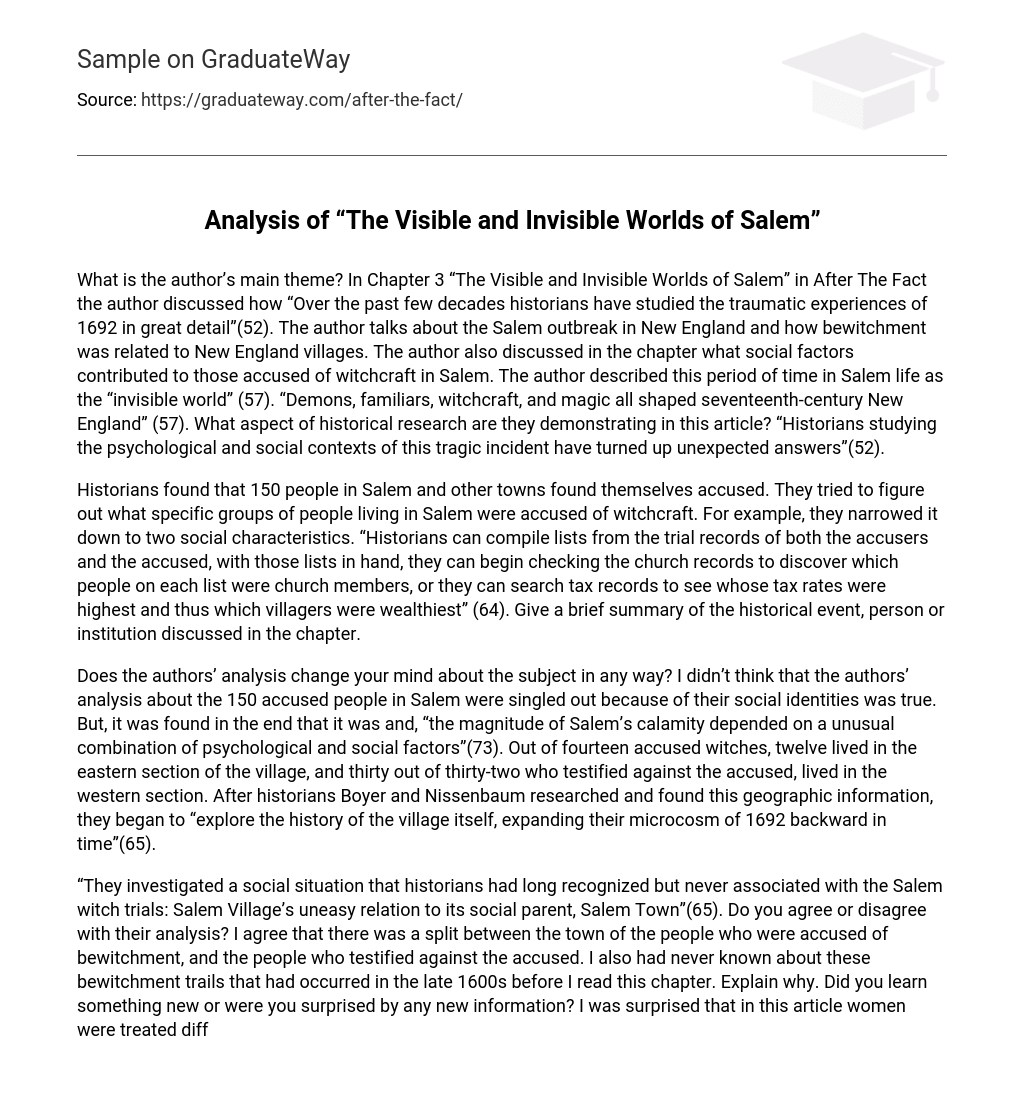What is the author’s main theme? In Chapter 3 “The Visible and Invisible Worlds of Salem” in After The Fact the author discussed how “Over the past few decades historians have studied the traumatic experiences of 1692 in great detail”(52). The author talks about the Salem outbreak in New England and how bewitchment was related to New England villages. The author also discussed in the chapter what social factors contributed to those accused of witchcraft in Salem. The author described this period of time in Salem life as the “invisible world” (57). “Demons, familiars, witchcraft, and magic all shaped seventeenth-century New England” (57). What aspect of historical research are they demonstrating in this article? “Historians studying the psychological and social contexts of this tragic incident have turned up unexpected answers”(52).
Historians found that 150 people in Salem and other towns found themselves accused. They tried to figure out what specific groups of people living in Salem were accused of witchcraft. For example, they narrowed it down to two social characteristics. “Historians can compile lists from the trial records of both the accusers and the accused, with those lists in hand, they can begin checking the church records to discover which people on each list were church members, or they can search tax records to see whose tax rates were highest and thus which villagers were wealthiest” (64). Give a brief summary of the historical event, person or institution discussed in the chapter.
Does the authors’ analysis change your mind about the subject in any way? I didn’t think that the authors’ analysis about the 150 accused people in Salem were singled out because of their social identities was true. But, it was found in the end that it was and, “the magnitude of Salem’s calamity depended on a unusual combination of psychological and social factors”(73). Out of fourteen accused witches, twelve lived in the eastern section of the village, and thirty out of thirty-two who testified against the accused, lived in the western section. After historians Boyer and Nissenbaum researched and found this geographic information, they began to “explore the history of the village itself, expanding their microcosm of 1692 backward in time”(65).
“They investigated a social situation that historians had long recognized but never associated with the Salem witch trials: Salem Village’s uneasy relation to its social parent, Salem Town”(65). Do you agree or disagree with their analysis? I agree that there was a split between the town of the people who were accused of bewitchment, and the people who testified against the accused. I also had never known about these bewitchment trails that had occurred in the late 1600s before I read this chapter. Explain why. Did you learn something new or were you surprised by any new information? I was surprised that in this article women were treated different than men.
“Of 147 additional accused witches in seventeenth- century New England, 82 percent were women” (70). It was also surprising to me that the Salem witchcraft had been going on for twenty years, when everyone thought that it just started happening in 1692. “Suddenly the Salem witch trials take on an entirely new appearance. Instead of being a dramatic disruption that appears out of nowhere in a village kitchen and then disappears equally suddenly at the end of the ten months, it becomes an elaboration of a quarrel that has gone on for nearly twenty years!” (67).





